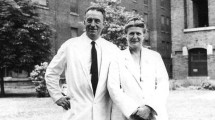Summary
The quality of the fetal bovine serum (FBS) produced for tissue culture purposes by eight commercial suppliers in the United States was tested over a period of 1 year. The results were compared with tests on some special FBS produced during the same period under conditions which included maximal sterile precautions, freedom from whole cells, and rapid processing in the cold. The findings were that: (a) the specially produced FBS had demonstrably better cell growth-supporting capacity, (b) commercial FBS had a significantly higher free fatty acid content compared to the specially produced FBS, (c) higher free fatty acid content was correlated with poorer cell growth-supporting capacity, (d) extremely wide variations among the different commercial suppliers were found in some of the test results, (e) roughly 10% of commercial lots of FBS were contaminated with bacteria and/or fungi, and (f) at least three different bacteriological culture media, including blood agar plates, were required for adequate sterility testing of FBS. The need for better quality control of FBS is discussed, the method for producing FBS with better cell growth-supporting capacity is described, and both “minimal” and “stringent” ranges of acceptable values for some chemical tests suitable for quality control are given.
Similar content being viewed by others
References
Caruso, D., personal communication. Hyland Division of Travenol Laboratories, Inc., Los Angeles, Calif.
Kingsley, G. R. 1939. The determination of serum total protein, albumin, and globulin by the biuret reaction. J. Biol. Chem. 131: 197–200.
Sheard, C., and A. H. Sanford. 1929. A photoelectric hemoglobinometer. J. Lab. Clin. Med. 14: 558–574.
Caband, P. G., and F. Wroblewski. 1958. Colorimetric measurement of lactic dehydrogenase activity of body fluids. Am. J. Clin. Pathol. 30: 234–236.
Henry, R. J., N. Chiamori, O. J. Golub, and S. Berkman. 1960. Revised spectrophotometric methods for the determination of glutamic-oxalacetic transaminase, glutamic-pyruvic transaminase, and lactic acid dehydrogenase. Am. J. Clin. Pathol. 34: 381–398.
Bragdon, J. H. 1951. Colorimetric determination of blood lipids. J. Biol. Chem. 190: 513–517.
Trout, D. L., E. H. Estes, Jr., and S. J. Friedberg. 1960. Titration of free fatty acids of plasma: a study of current methods and a new modification. J. Lipid Res. 1: 199–202.
Dryer, R. L., A. R. Tammes, and J. I. Routh. 1957. The determination of phosphorus and phosphatase withN-phenyl-p-phenylenediamine. J. Biol. Chem. 225: 177–183.
Chiamori, N., and R. J. Henry. 1959. Study of the ferric chloride method for determination of total cholesterol and cholesterol esters. Am. J. Clin. Pathol. 31: 305–309.
Molander, C. W., A. J. Kniazeff, C. W. Boone, A. Paley, and D. T. Imagawa. 1972. Isolation and characterization of viruses from fetal calf serum. In Vitro 7: 168–173.
Hayflick, L. 1965. Tissue cultures and mycoplasmas. Texas Rep. Biol. Med. 23: 285–303.
Barile, M. F., and M. C. Hardegree. 1969. A cell culture assay to evaluate the toxicity of Arlacel. A. Proc. Soc. Exp. Biol. Med. 133: 222–233.
Molander, C. W., A. Paley, C. W. Boone, A. J. Kniazeff, and D. T. Imagawa. 1968. Studies on virus isolation from fetal calf serum. In Vitro 4: 148.
Molander, C. W., A. J. Kniazeff, A. Paley, and D. T. Imagawa. Further studies on virus isolation from bovine serums. Abstracts, 20th Tissue Culture Association Meeting, Detroit, Mich., June 9–12, 1969.
Barile, M. F. Personal communication, National Institutes of Health, Bethesda, Md.
Barile, M. F., and J. Kern. Personal communication, manuscript in preparation, National Institutes of Health, Bethesda, Md.
Andrews, E. J. 1970. Toxicity of Millipore filter detergent to diffusion of chamber cultures. Transplantation 10: 267–270.
Fifield, C. W., General Manager, Millipore Corporation, Bedford, Mass. Personal communication.
deDuve, C., and R. Wattiaux. 1966. Functions of lysosomes. Ann. Rev. Physiol. 28: 435–492.
Fogh, J., and H. Fogh. 1969. Procedures for control of mycoplasma contamination of tissue cultures. Ann. N.Y. Acad. Sci. 172: 15–30.
Author information
Authors and Affiliations
Additional information
Product Manager, Hyland Division of Travenol Laboratories, Inc., Los Angeles. Calif.
Rights and permissions
About this article
Cite this article
Boone, C.W., Mantel, N., Caruso, T.D. et al. Quality control studies on fetal bovine serum used in tissue culture. In Vitro 7, 174–189 (1971). https://doi.org/10.1007/BF02617963
Issue Date:
DOI: https://doi.org/10.1007/BF02617963




